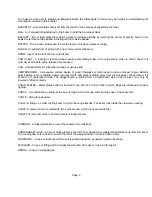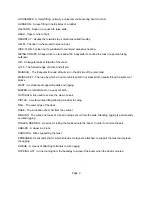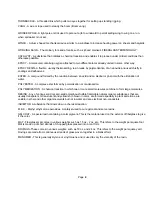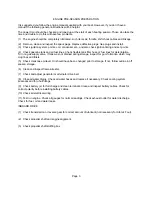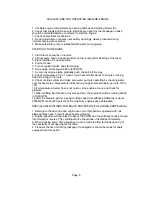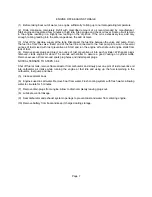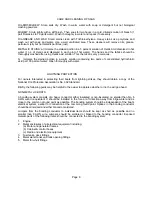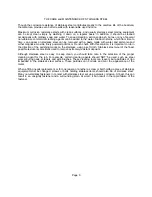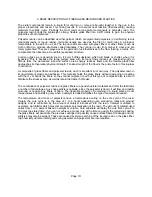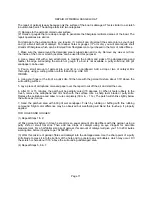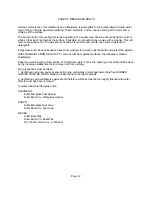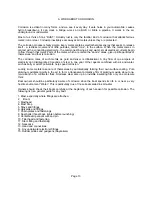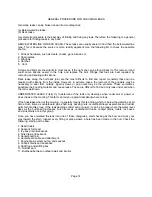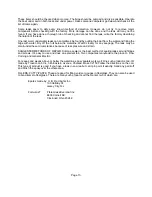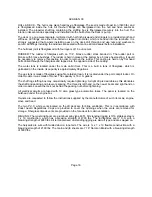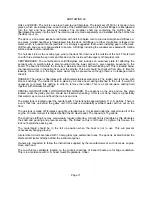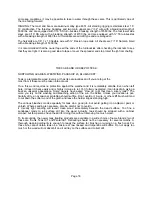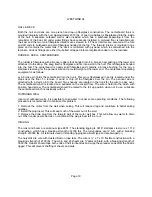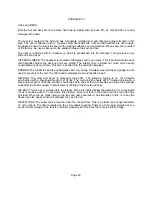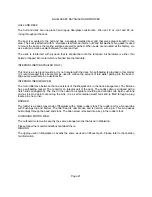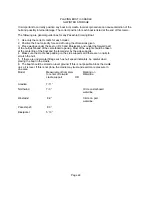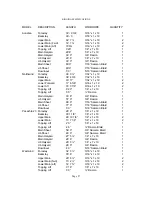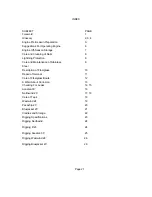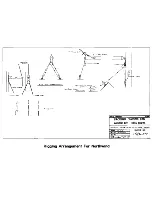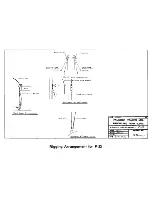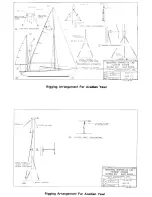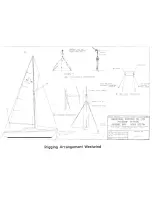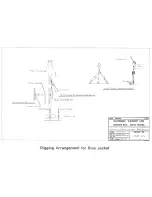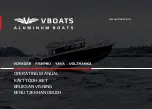
ACADIAN 30
HULL & DECK - The hull is one piece hand lay-up fiberglass. The keel is made of cast Iron (3400 lb.) and
is fiberglassed inside the hull. All thru-huII fittings are fiberglassed into the hull and have seacocks
installed. The propeller shaft log containing the stuffing box is fiberglassed securely into the hull. The
interior units are made separately and installed into the hull before the deck is put on.
The deck is a one piece laminate, reinforced with half inch plywood and stringers to provide strength and
stiffness. All fittings are either thru-bolted or tapped into metal, which is bonded into the laminate. It is
strongly suggested that owners installing gear on the deck drill through and use nuts and washers to
secure. All fittings including the windows are sealed with marine silicone sealer before installation.
The hull deck joint is fiberglassed with four layers of 1.5 ounce mat.
RUDDER: The rudder is fiberglass with an 11/4” bronze rudder stock bonded in. The rudder port is
bronze with bronze bushings. The rudder is held in place at the bottom by a bronze heel casting. It would
be necessary to remove this casting in order to remove the rudder. This casting is held on by flat head
bolts drilled through the fiberglass and tapped into the opposite side of the casting.
The water tank is located under the main cabin floor. This is a built in tank of fiberglass, which is
gelcoated on the inside. Its capacity is approximately 38 gallons.
The gas tank is made of fiberglass using fire retardant resin. It is located under the port cockpit locker. On
older models, it was made of monel. The capacity is 16 U.S. gallons.
The shaft log stuffing box may occasionally require tightening. A slight drip is desirable as this lubricates
the shaft and packing and prevents scaring. The thread is left hand on the newer boats and right hand on
older models. Loosen the lock nut behind the packing nut before tightening.
All electrical circuits are fused with 10 amp glass type automotive fuses. The panel is located on the
bulkhead under the engine box.
Owners are requested to follow the instructions supplied by the manufacturers of such items as; engine,
stove and head.
The two P.V.C. white vents located on the aft deck are for bilge ventilation. This is in accordance with
Coast Guard Regulations. Caps are provided to cover the openings when the vents are removed for
storage. Fiberglass dorade vents are provided on the fore deck for cabin ventilation.
RIGGING: The mast and boom are aluminum alloy type 6351. All standing rigging is 3/16 stainless steel x
1 x 19 construction, which has a breaking strength of 4700 lbs. ‘The turnbuckles are ¾” S.S. with a
breaking strength of 6380 lbs. All terminals used on standing rigging are aircraft type and are swaged on.
The halyards are wire with twisted dacron rope tails. The wire is
1
/s x 7 x 19 flexible construction with a
breaking strength of 2100 lbs. The main and jib sheets are 7 16” Samson Braid with a breaking strength
of 5300 lbs.
Page 16

